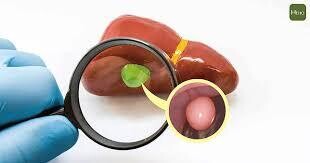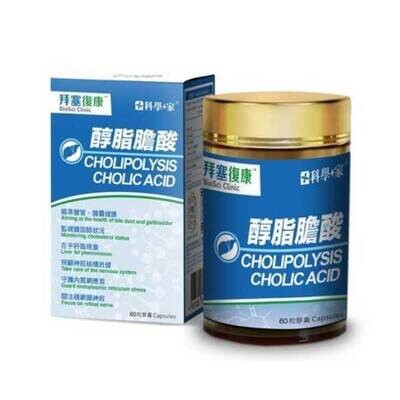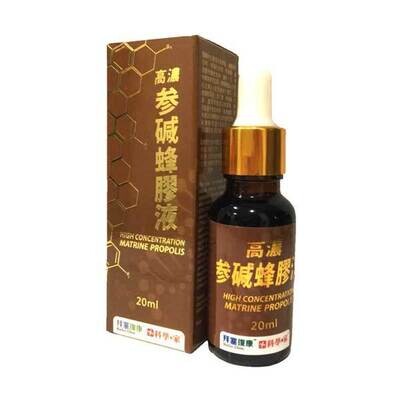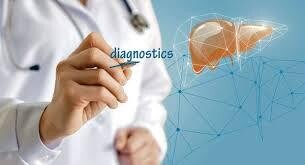如你有此疾病,請遵照閣下醫生的完整醫療方案;而是否使用多學科復康方案前,你必須咨詢主診醫生的意見,如果閣下的主診醫生不建議您加入補充劑調理組合,請你不要使用。如果你需要尋求其他醫生作第二咨詢,閣下可聯絡我們線上<無邊界醫生>。或你自己城市內的其他專業醫生的再診斷。
膽囊息肉(膽固醇)
膽囊息肉是膽囊粘膜的隆起,突出到膽囊腔內。膽囊息肉在成人中的患病率估計在0.3%-12.3%之間。然而,只有5%的息肉被認為是“真正的”膽囊息肉,這意味著它們是惡性的或具有惡性潜能。診斷和監測膽囊息肉的主要放射學方法是經腹超聲檢查。然而,有證據表明,內鏡超聲等其他檢查方法可以提高診斷準確性。在本次審查過程中,將依次討論這些問題。現時的指南建議對大小大於等於10 mm的膽囊息肉行膽囊切除術,但當確定其他危險因素時,該閾值會降低。這種做法背後的證據質量相對較低。
以上概述了支持當前膽囊息肉治療指南的現有證據的差距。TAUS是現時膽囊息肉放射學檢查的主要方法。EUS和HRUS作為TAU的輔助手段已顯示出一些前景,但需要更多的工作來評估息肉的確切作用和種類,以提供診斷準確性。儘管10 mm及以上的息肉更可能是真息肉,但該準則將遺漏大量低於該閾值的真息肉,當假息肉大於10 mm時,也將不必要地進行膽囊切除術。將上述風險因素考慮在內以降低膽囊切除術的閾值無疑會减少10 mm以下息肉的漏診數量,但在不需要時也會進行膽囊切除術。尚未進行任何研究來評估遵循這些指南的影響,因此需要進行更大的回顧性和前瞻性病例系列,以評估根據當前指南治療膽囊息肉的成功率。 (1)
膽息肉(膽固醇結構) -多學科復康組合:
顯著進程:約1-4個月
多學科復康組合:
- 藥物及其他醫療方案,請遵醫從醫生建議
- 飲食營養請依營養師指引
- 運動及或心理輔導,請參考各專家建議
- 為免錯誤診斷及漏診,請上傳最近一個月醫院的專業診斷報告
不適合使用:
- 大於1公分
- 明顯發炎堵塞期內
- 已有黃疸
- 非膽固醇形成的膽息肉
生活配合:
- 不能吃太飽,以8成飽肚為主
- 高脂、高膽固醇食物必須避開少吃
- 早餐一定要吃
- 多喝白開水,每天2公升
- 多吃膳食纖維食物
- 戒掉夜宵習慣
- 早睡早起,不要熬夜
飲食戒口:
- 煎炸烤燒食物儘量少吃
- 動物肝臟、血液等高鐵質食物不要吃
注意:
- 為營養補充品,不能代替藥物。
- 懷孕或哺乳期女士、嬰幼兒,請不要食用本品。
- 如不瞭解問題原因或問題持續,請儘快諮詢醫生。
If you have this disease, please follow your doctor's complete medical plan; Before using the multidisciplinary rehabilitation program, you must consult the attending doctor. If your attending doctor does not recommend you to join the supplement conditioning combination, please do not use it. If you need to seek a second consultation from another doctor, you can contact our online doctor without borders. Or another professional doctor in your own city.
Gallbladder polyp (Cholesterol)
Gallbladder polyp is the bulge of gallbladder mucosa and protrudes into the gallbladder cavity. The prevalence of gallbladder polyps in adults is estimated to be between 0.3% and 12.3%. However, only 5% of polyps are considered "real" gallbladder polyps, which means that they are malignant or have malignant potential. The main radiological method for diagnosing and monitoring gallbladder polyps is transabdominal ultrasonography. However, there is evidence that other examination methods such as endoscopic ultrasonography can improve the diagnostic accuracy. These issues will be discussed in turn during this review. Current guidelines recommend cholecystectomy for gallbladder polyps larger than or equal to 10 mm, but this threshold will be reduced when other risk factors are determined. The quality of evidence behind this approach is relatively low.
The gaps in available evidence supporting current guidelines for the treatment of gallbladder polyps are outlined above. Taus is the main method of radiographic examination of gallbladder polyps. EUS and hrus have shown some prospects as adjuncts to tau, but more work is needed to evaluate the exact role and types of polyps to provide diagnostic accuracy. Although polyps of 10 mm and above are more likely to be true polyps, the criterion will omit a large number of true polyps lower than the threshold, and cholecystectomy will be unnecessary when the false polyps are greater than 10 mm. Taking the above risk factors into account to reduce the threshold of cholecystectomy will undoubtedly reduce the number of missed polyps below 10 mm, but cholecystectomy will also be performed when not needed. No studies have been conducted to assess the impact of following these guidelines, so a larger retrospective and prospective case series is needed to assess the success rate of gallbladder polyps treated according to current guidelines. (1)
Gallbladder polyp (cholesterol structure) - multidisciplinary rehabilitation combination
Significant progress: about 1-4 months
Multidisciplinary rehabilitation combination:
- Please follow the doctor's advice for drugs and other medical plans
- Please follow the dietitian's guidelines for diet and nutrition
- For sports and or psychological counseling, please refer to the suggestions of experts
- To avoid misdiagnosis and missed diagnosis, please upload the professional diagnosis report of the hospital in the latest month
Not suitable for use:
- Greater than 1 cm
- Obvious inflammation and blockage period
- Jaundice
- Bile polyps not formed by cholesterol
Life cooperation:
- Don't eat too full, mainly 80% full belly
- High fat and cholesterol foods must be avoided and eaten less
- Be sure to eat breakfast
- Drink plenty of boiled water, 2 liters a day
- Eat more dietary fiber food
- Get rid of the night snack habit
- Go to bed early and get up early. Don't stay up late
Dietary abstinence:
- Try to eat less fried and roasted food
- Do not eat rich iron foods such as animal liver and blood
Warm Reminder:
- It is a nutritional supplement and cannot replace drugs.
- Pregnant or lactating women, infants and young children, please do not eat this product.
- If you do not know the cause of the problem or the problem persists, please consult your doctor as soon as possible.
Refs:參考文獻:
McCain RS, Diamond A, Jones C, Coleman HG. Current practices and future prospects for the management of gallbladder polyps: A topical review. World J Gastroenterol. 2018;24(26):2844-2852. doi:10.3748/wjg.v24.i26.2844
If you have this disease, please follow your doctor's complete medical plan. You must consult the attending doctor before using the multidisciplinary rehabilitation plan. If your attending doctor does not recommend you to join the supplement conditioning combination, please do not use it. If you need to seek second opinion from other doctors, you can contact our online "Doctors Without Borders", or another professional doctor in your own city.






